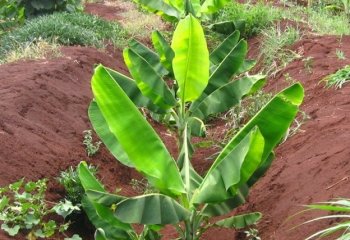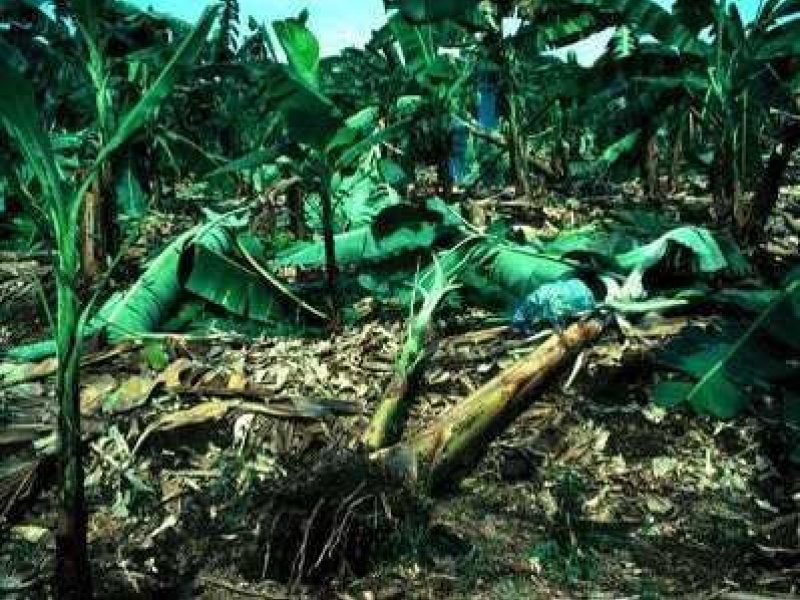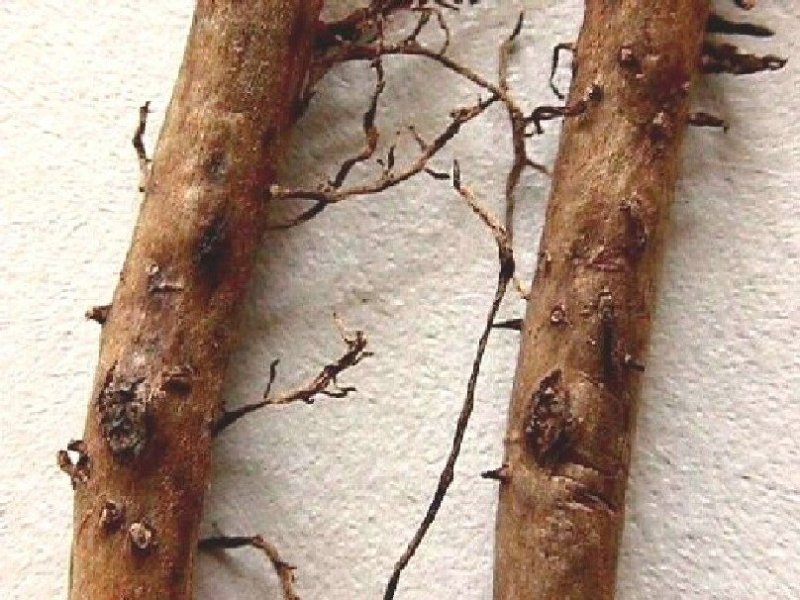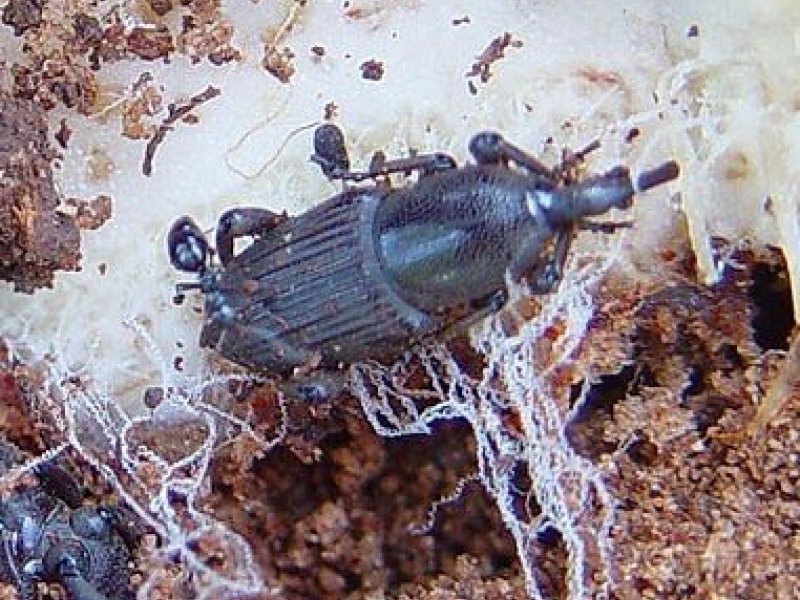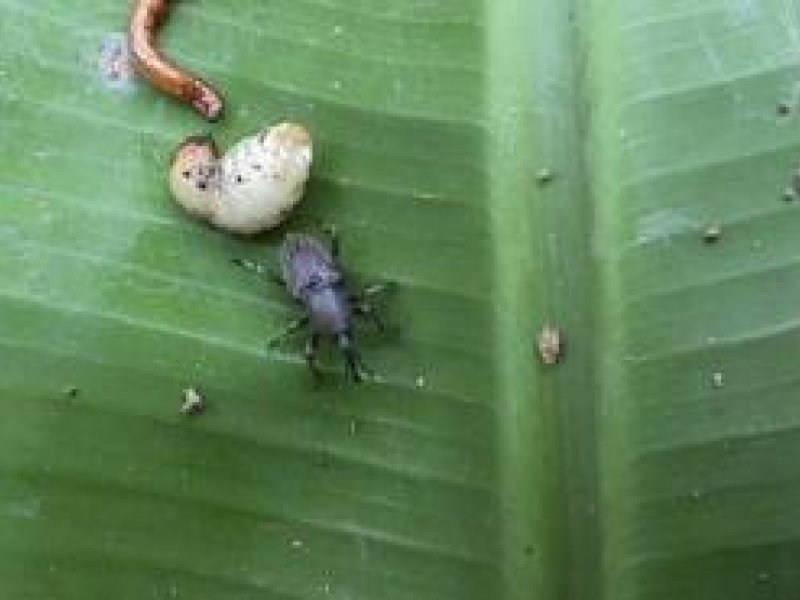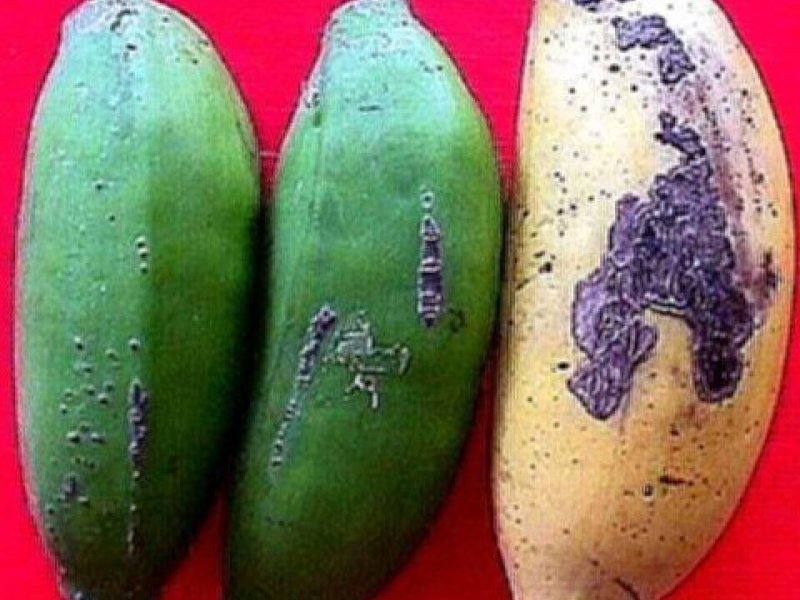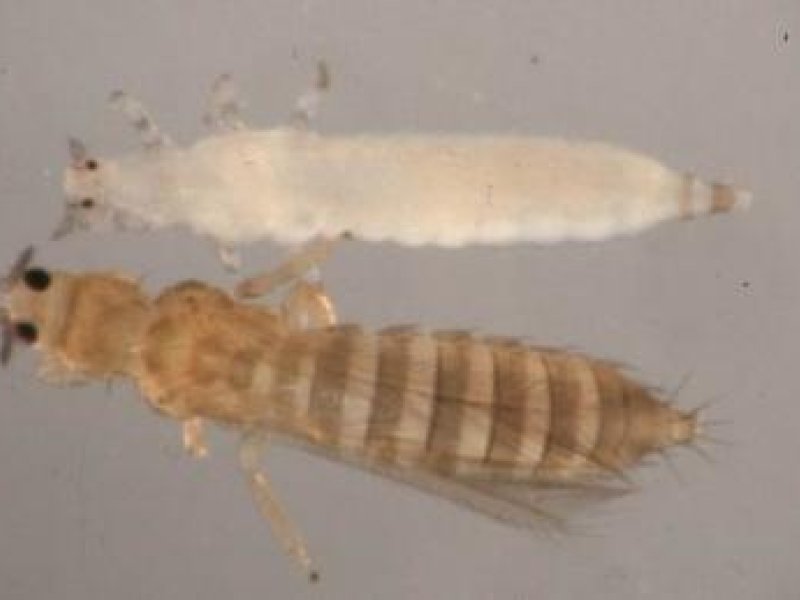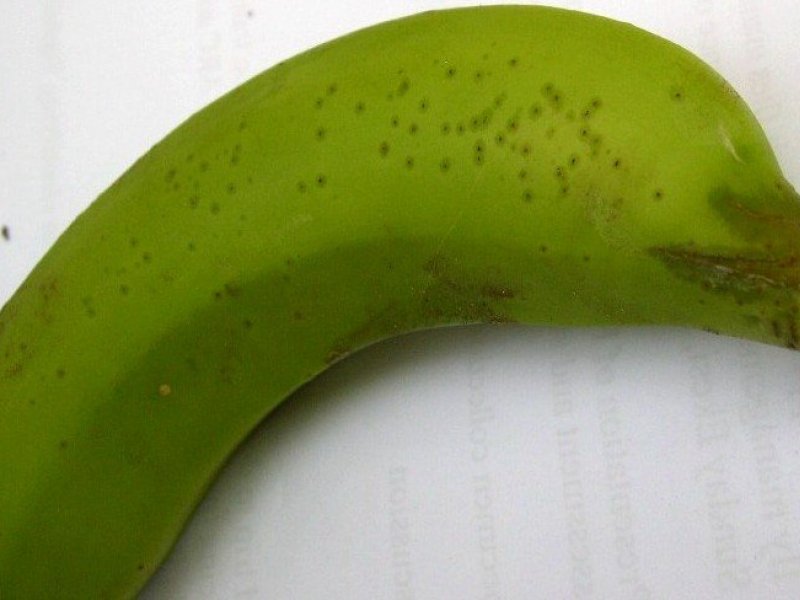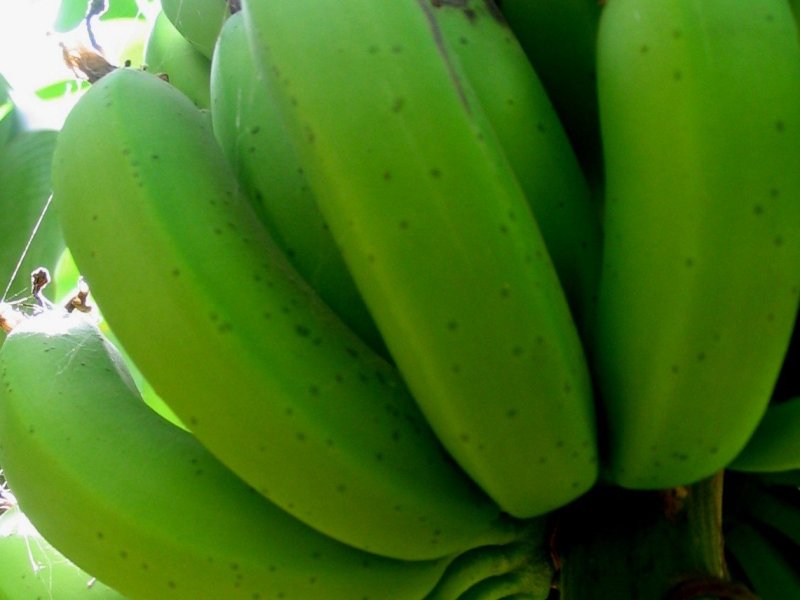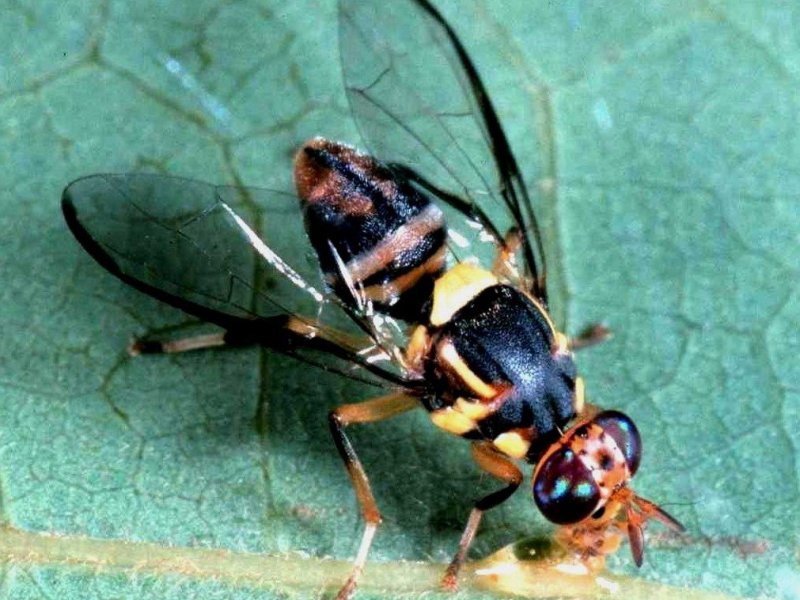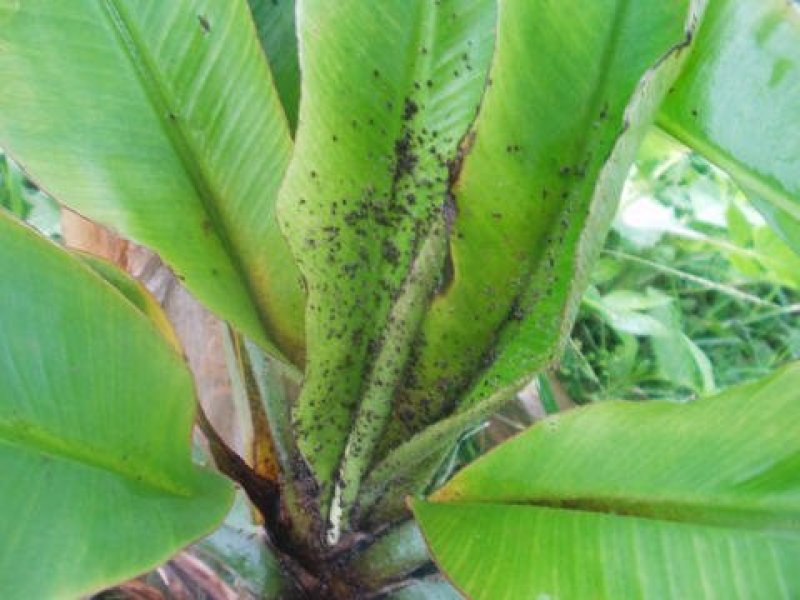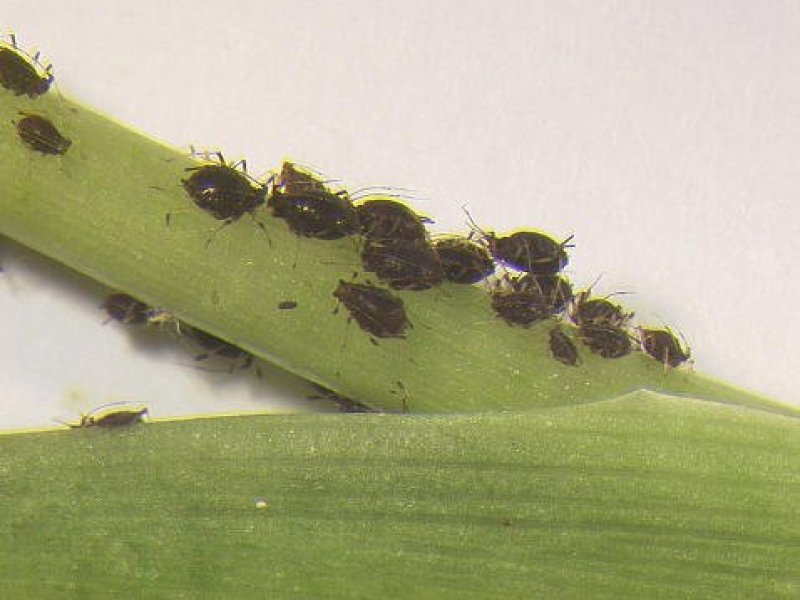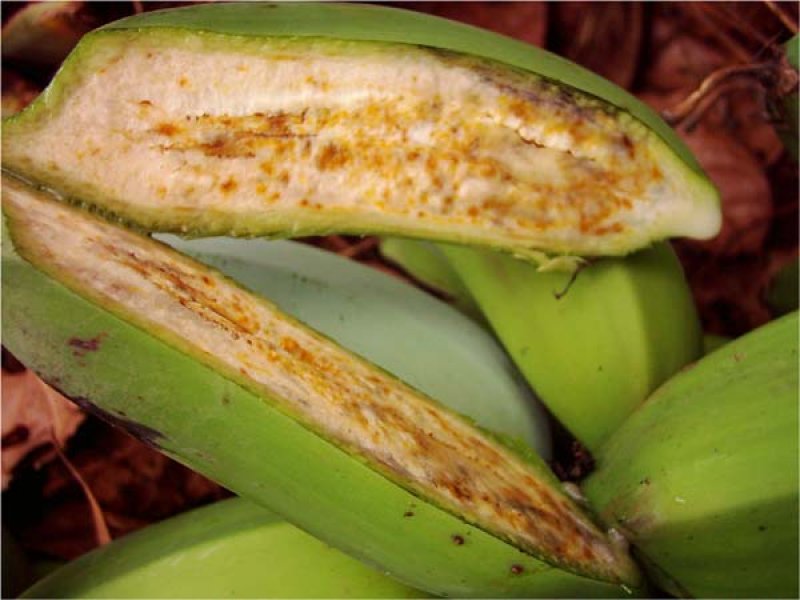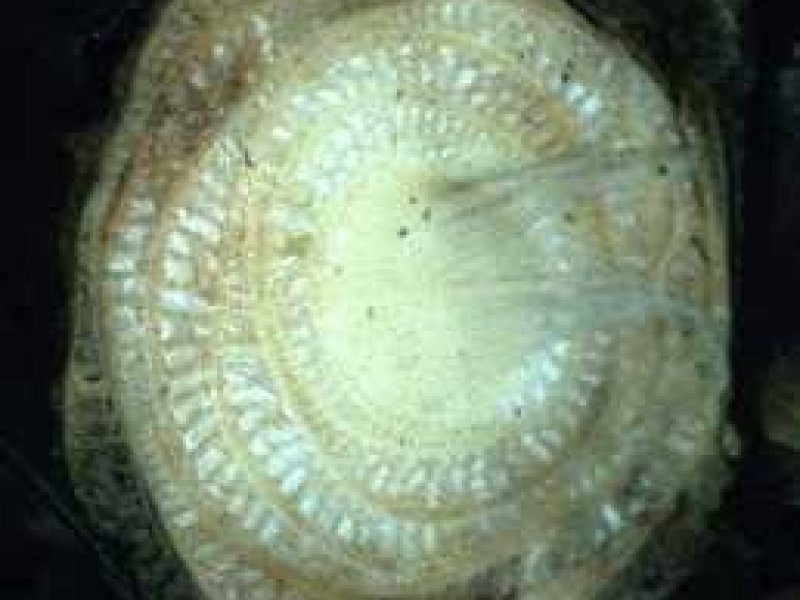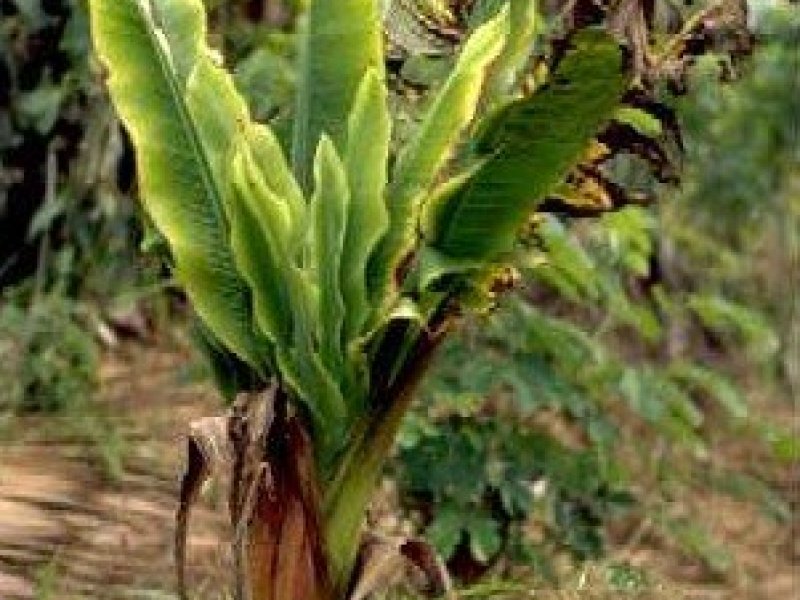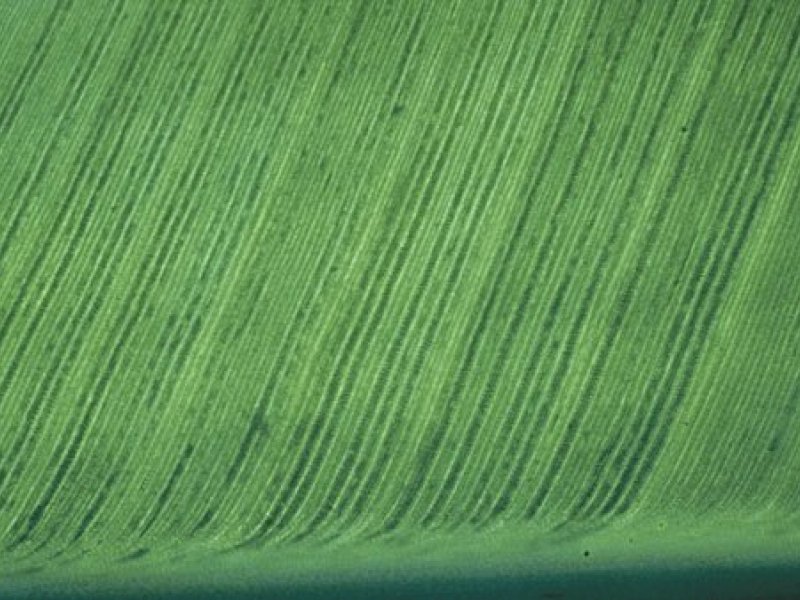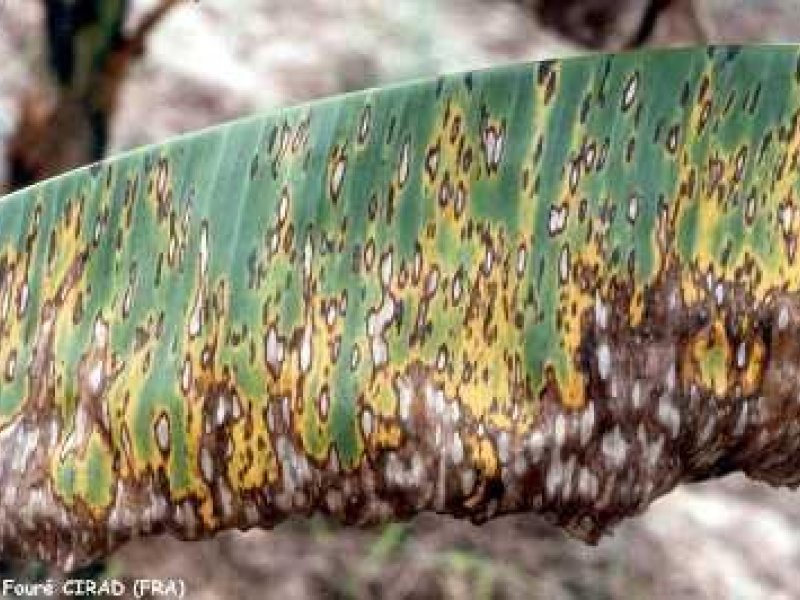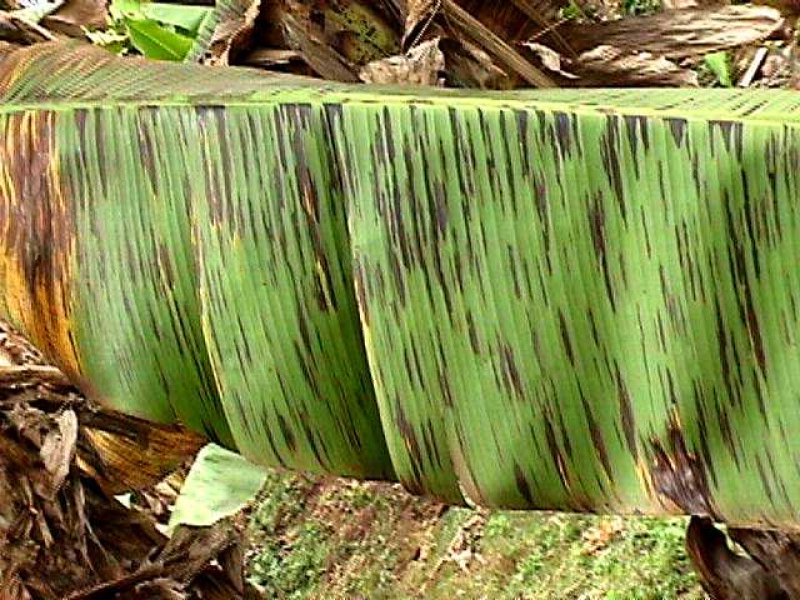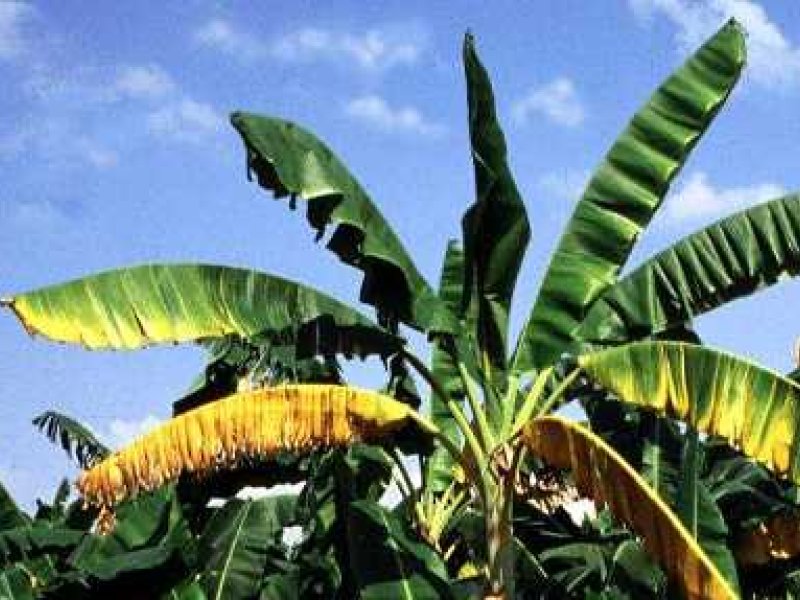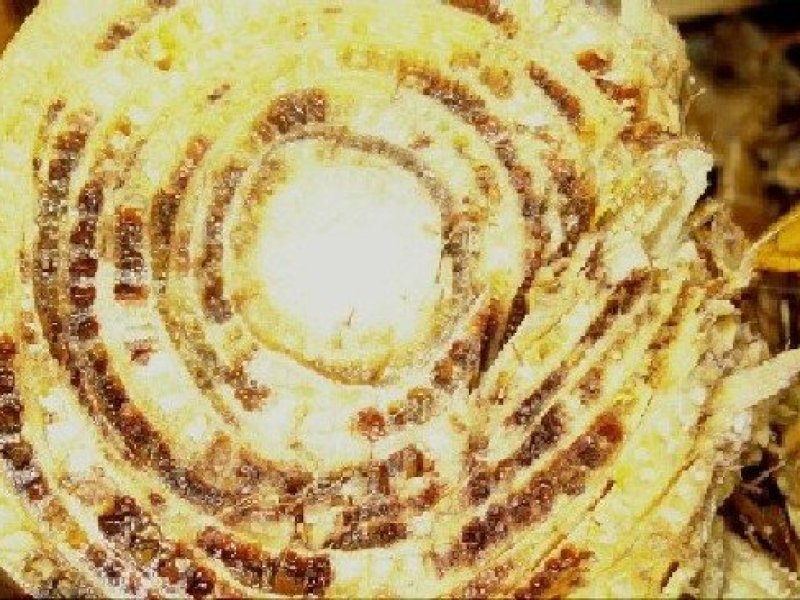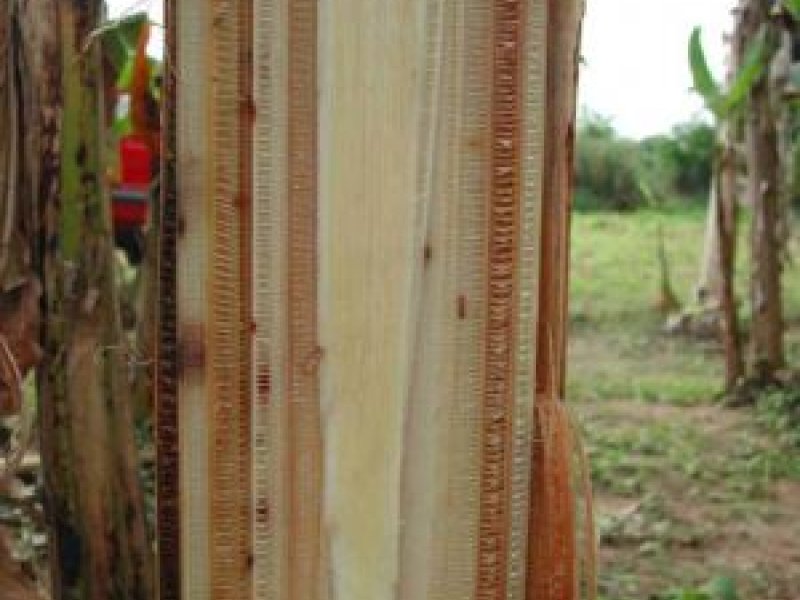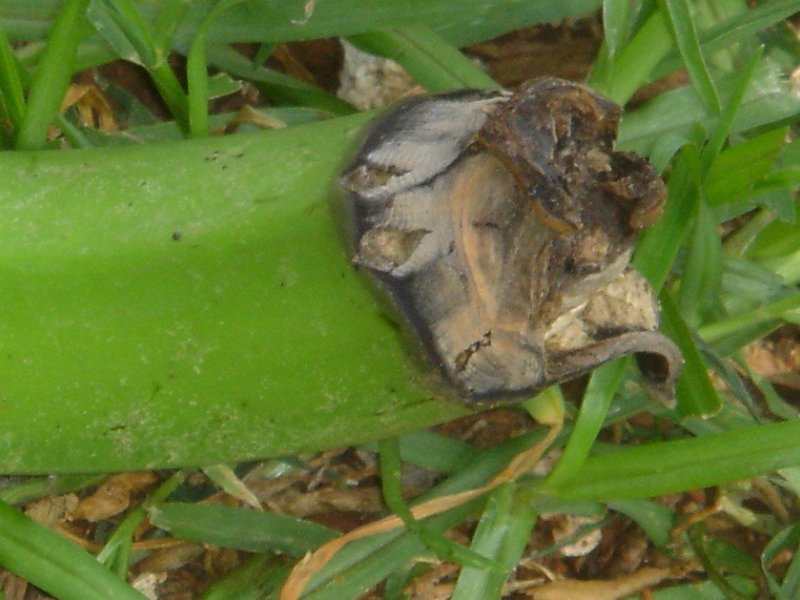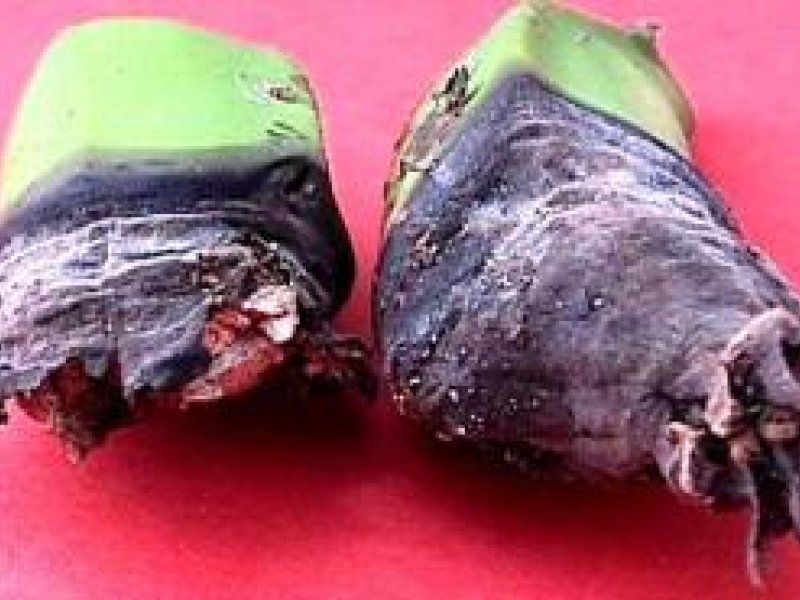Scientific Name
General Information and Agronomic Aspects
Introduction
Bananas are fruit-bearing plants that belong to the Musa genus within the family Musaceae. Bananas are one of the most important and oldest food crops with evidence of cultivation dating back to 4000 BCE in New Guinea. They are broadly classified into the dessert types (table fruits) and the cooking types (plantains). Most are the result of a long history of hybridization and mutations. Most common bananas and plantains are triploid hybrids of either M. acuminata and M. balbisiana (Musa x paradisiaca) or Musa acuminata alone, both species being of Southern Asian origin.
Plantains are large and starchy fruits that are primarily used for cooking and are often boiled, fried or roasted before consumption. They have a thick skin that is green when unripe and turns yellow or black as they ripen. Plantains have a firm texture and a less sweet taste compared to dessert bananas. Plantains are a staple food in many tropical regions and are an important source of carbohydrates and dietary fiber. Dessert banana are smaller and sweeter than plantains. They have a thinner skin that is usually yellow when ripe, although some varieties may have a reddish or purple tinge. Dessert bananas have a soft and creamy texture with a sweet flavor. They are typically consumed raw and may also be processed into starch, chips, puree, smoothies, beer (In Africa), vinegar or may be dehydrated and sold as dried fruit. The dessert type are also popular snack or ingredients in various desserts, and baked goods. Flour is produced from both plantains and table bananas, which can then be used in soups, baking or as a drink.
The flowers can be used as a vegetable, but they have to be heated briefly in salty water to remove the bitterness. The fresh leaves have a high content of protein and cattle and chicken like them because of their taste. The leaves are also used as packing material and for roofing. Together with the stem (pseudo-stem) it also offers an excellent mulching material. Bananas can also be planted as a windbreak to a vegetable garden. Bananas are a staple food in many of the lower altitude, wetter areas of East Africa. They are mostly grown as a subsistence crop, although there is much internal and regional trading. In addition to their culinary uses the fruit as well as the other parts of the plant are used to treat different human diseases in traditional medicine. The banana is traditionally used to remedy diarrhoea, dysentery, intestinal lesions in ulcerative colitis, diabetes, sprue, uremia, nephritis, gout, hypertension and cardiac disease (Denham, T, et al., 2004, Imam & Akter, 2011).
Resembling the banana is Enset or false banana (Ensete ventricosum (Synonym: E. edule)) found from Cameroon, Central Africa, Sudan, Ethiopia south to South Africa. It grows in wet upland valleys and ravines and along streams in forests of lower mountain slopes, 1,000–2,700 m. In south-central Ethiopia enset is extensively cultivated for food up to 3,000 m in moist and wet Weyna Dega and Dega agroclimatic zones in nearly all regions. A meal or flour is made from the pulp inside the false stem and rootstock. Enset differs from Musa, the true banana in the terminal head of flowers, its large seed and by dying after fruiting. The leaf blades make a good durable thatch and the midrib a strong fibre for rope or sacking. Pollination is commonly brought about by bats transferring the sticky pollen..
Plantains are large herbaceous plants with an erect pseudo stem that can grow to a height of 6 to 10 meters. The pseudostem is composed of tightly overlapping leaf sheaths. Leaves; long, broad, and arranged spirally at the top of the pseudostem with a prominent midrib and numerous parallel veins. Roots; system consists of a fibrous network of roots that spread horizontally in the soil. Fruits: typically, longer and larger than the more commonly consumed dessert bananas. They have thick, green skin when unripe, which turns yellow or black as the fruit ripens. Flesh: firm and creamy with a mild flavor when cooked. Unlike dessert bananas, which are primarily consumed raw, plantain bananas are usually cooked or processed before eating due to their high starch content. The plant produces inflorescences, which hang down from the top of the plant. These bunches consist of multiple tiers of flowers, with each tier containing both male and female flowers. The female flowers are located towards the base of the bunch, while the male flowers are found towards the tip. The flowers are typically yellowish or cream-colored.
Plantain bananas are commonly grown in tropical and subtropical regions around the world. They require a warm and humid climate to thrive and are often cultivated in commercial plantations or small-scale farms. Due to their high nutritional value and versatility in culinary applications, plantain bananas are an important staple food for many cultures, particularly in Africa, the Caribbean, and parts of Asia and South America. (Missouri Botanical Garden, (Dufour et al., 2009).
Common banana varieties in Africa
Bananas are a highly diverse fruit, exhibiting significant variation in size, color, flavor, and texture. The common banana varieties found in Africa include
Giant Cavendish
It is a tall variety
Resistant to Fusarium wilt (Panama disease)
Has a strong Pseudo- stem
The plant requires propping
Chinese dwarf
Short banana variety
Banana does not require propping
Grows in areas with altitude as high as 2100m
Resistant to Fusarium wilt (panama disease).
Grand Naine
A cultivar of Cavendish type
• Tolerant to environmental stress
• Produces good quality bunches with fruits which are uniformly yellow in color
• Mature fruits have good shelf life
Requires propping
William’s hybrid
Produces large bunches with fruits which have excellent flavor, aroma, and taste when ripe
Ripe fruits have short shelf life
Valery
A tall variety and has good taste • Strong pseudo-stem
FHIA Hybrids: “FHIA-17, 18, 23, 25”
Varieties which have been developed by International Institute of Tropical Agriculture
Resistant to “Black Sigatoka”
Used for cooking and dessert
Produce heavy bunches with an average weight of 50 kg • The plants require support to prevent lodging
Other variety names include;
Ngombe, Lacatan, Apple (Sweet), Gross Michel, Poyo, Kisii Matoke, Muraru, Sweet/ Sukari, Bogoya, Kampala, Kisigame, Manyoke, Kiganda & Mutahato.
Banana varieties in Africa exhibit a remarkable diversity morphologically, in taste and in use. Some cultivars are good for cooking, others for brewing and others for eating raw. The cultivars are named based on their appearance, size, taste etc.
i) Cooking banana: Nakabululu, Nakitembe, Muvubo, Nakyetengu, Kibuzi, Mbwazirume, Musakala,
ii) Juice or Brewery bananas: Kayinja, Kisubi or Mbidde
iii) Roasting banana: Gonja.
iv) Dessert banana: Bogoya, Ndizi (apple banana).
Source: Buganda Bumu North American Conventions – (bbnac.org)
Ecological conditions
The ancestors of the commercial bananas originated from the Malaysian Peninsula, New Guinea and South-East Asia. They grow in alluvial and volcanic soils, as well as in river deltas and forest perimeters, where the soil is rich in organic matter. They are found at the top or the middle of secondary forests, depending on variety. Some varieties are more or less adaptable to shade. Bananas grow well in fairly hot and humid areas that is within an altitude of 0-1800 m above sea level with the exception of"Dwarf Cavendish" which can grow well up to 2100 metres above sea level. For survival a rainfall of at least 1000 mm per year is necessary, but in order to achieve good yields bananas should receive 200-220 mm water per month as a regular supply. For most commercial banana growers this means irrigating during the dry months. Commercially used varieties cannot endure stagnant water conditions, so flood irrigation should only be used if the soil has good drainage.
Temperature is a major factor; the optimum for growth is about 27o C and the maximum 38o C. Plant growth is retarded and chilling injury occurs below 13o C.
Bananas are sensitive to strong winds, which shred the leaves, cause crown distortions and blows plants over, and are susceptible to lodging in the absence of windbreaks. Planting in wind sheltered positions and in blocks rather than strips is recommended. If planted in blocks the plants protect each other against wind.
The best soil for bananas is a deep, friable loam with good drainage and aeration. High fertility is a great advantage and organic matter content should be 3% or more. Bananas, therefore respond well to application of well decomposed good quality composts. The plants tolerate pH of 4.5-7.5 and optimum pH is between 6 and 7.5. Plantains require more fertile soils than table bananas. Agricultural lime or preferably dolomitic lime (Ca + Mg content) can be added to soils that are very acidic in order to make them less acidic and better suited for banana production.
Agronomic aspects
Bananas are propagated by vegetative means. There are several types of vegetative planting material. Selection is done according to availability, required amounts and transport possibilities. Smallholders propagate banana mostly by corms / rhizomes (the bottom part of the plant that remains underground and bears several buds which develop into suckers) and suckers. Corms / rhizomes can be used as a whole or in pieces each bearing one or more buds. Using whole corms is laborious, requires a large amount of starting - planting material and involve high transport costs. Using corm pieces is less expensive.
Suckers are produced profusely at the base of each plant. Very young suckers just appearing above the ground, known as peepers, are easy to transport, but will produce first yield after 2 years. Sword suckers, about 75 cm high with corm diameter of about 15 cm, have a well-developed base with narrow sword-shaped leaves. They will produce the first yield about 18 months after planting. Maiden suckers are tall suckers normally 5-8 months, which have not yet set a bunch. They will produce a bunch in the first year. Water suckers, which have broad leaves should not be used for propagation since do not produce healthy banana clumps and the survival rate after planting is low.
Banana plants are also propagated through tissue culture (TC). Normally disease and pest free plantlets are multiplied under controlled conditions. Plantlets are grown in pots and are planted in the field after hardening them off. These tissue culture bananas yield considerably higher than traditionally propagated bananas when planted in clean soil that has not been previously used for banana production in the recent past. They are commercially available in Kenya from both Kenya Agricultural Research Centre, Thika, Jomo Kenyatta University of Agriculture and Technology, Juja and several private companies. The TC banana plants should be minimum 200-300 mm high at planting and have at least 5 healthy dark leaves and wider internodesa time of transplanting
Planting material should be selected from healthy plants, free of diseases and pests (e.g. bunchy top virus, nematodes and banana weevils), having all the desirable bunch qualities and high yielding ability. It is very important that the planting material is undamaged. Prior to planting, the roots and any damaged part of the rhizome should be removed with a sharp knife. Rhizomes or suckers showing symptoms of disease or pest attack (in particular nematodes or banana weevils) must be discarded.
Planting holes should be at least 0.6 m deep and 0.6 m in diameter and should be filled with topsoil mixed with organic manure. In areas with marginal rainfall larger holes of about 1.5 m in diameter and 1 m are recommended.
The spacing depends on variety, soil conditions and type of planting system. Short varieties, such as the 'Dwarf Cavendish', can be planted in a density of 2500 plants/ha, but more commonly in holes with spacing of 3 m x 3 m. The taller varieties 'Giant Cavendish', 'Robusta' or other strongly developing varieties are set at 600 - 1200 plants/ha or in planting holes spaced at 3 m x 4 m. Experiences in the different regions have led to various recommendations regarding size and depth of hole required, which should be followed. It is recommended to cover the planted rhizome with mulch.
The most suitable planting period is towards the end of the dry season, or at the beginning of the rainy season.
Intercropping
Bananas can be combined with practically any type of cultivated or wild plant, which has similar requirements. Young banana plants are excellent nurses for other crops and forest plants (cocoa, coffee, black pepper etc.), which can be planted very close to the bananas. During the first year bananas should be intercropped with shallow rooted crops for ease of weeding. Following illustrations show 3 examples how to intercrop bananas:
Husbandry
Around 4-6 weeks after the bananas and additional crops have been planted, a primary selective weeding should be done. Weeds are controlled by mechanical means (slashing, hoeing, etc.) or by hand. Grasses should be pulled up, and replaced by other non-creeping plants, for instance jack beans (Canavalis ensiformis) and Crotalaria spp.
Surplus shoots need to be regularly cut away from the planted bananas. The number of plants to leave per stool depends on the farmer's preferences. Many plants on a stool will result in a large number of small bunches per stool. Fewer suckers per stool will result in less but bigger bunches than are readily marketable. A common practice is to allow 1 flowering or fruiting stem and 2 to 3 suckers of different size for continuous banana production.
Tissue culture bananas produce large numbers of suckers 1-2 months after planting. These suckers should be cut off at the ground level to allow the development of the mother plant or until the mother plant reaches 1 m in height, at which time 1 following sucker is selected to continue. For good yields it is extremely important to follow the correct sucker selection:
a) Selection should be done when the mother plant is 1 m tall.
b) When the mother plant is 1 m tall 3 vigorous sword suckers facing eastward up to the slope (on sloppy land) should be selected. All other suckers should be cut at base, gorged out in the middle and growing point destroyed. After 1-2 months, the most vigorous sucker should be selected and the rest removed. This will be the first ratoon crop and the first sucker. The first sucker that is produced by the first ratoon sucker should be selected as the second ratoon crop. If the sucker selection is properly done, a large daughter sucker and a small granddaughter, a peeper all aligned in one direction will be seen.
Mulching
Mulch vegetation (bushes and trees) should be cut back, and the resulting material chopped up and spread around the surface as a mulch. This should be carried out once or twice a year, according to growth.
Regular mulching with organic matter derived from pruning and weeding help to maintain a layer of humus and also enhances microbiological activity in the soil. Pruning and weeding also helps in improving the general hygiene of the plantation, increase light penetration and air circulation, thus stimulating new growth. It also results in a continuous supply of organic matter for mulching.
It is important that the material is spread evenly throughout the entire plantation. However, mulching material should be placed away from the stool (about 60 cm) to ensure that the roots bury themselves deep in the ground at the base of the corm in search of moisture giving good anchorage to the plants. In addition, thrash/mulch may give shelter to banana weevils and should not be left near to the stool.
Addition of Mijingu rock phosphate will promote strong root formation and intercropping with legumes such as mucuna, dolichos or cowpeas for green manure will help supply nitrogen from the atmosphere. These measures will suffice to maintain the fertility of the soil even in situations of continuous banana growing.
The majority of banana varieties cultivated for export purposes require a high soil quality. In natural forest ecosystems, banana plants must be replaced by other species about every 10-15 years. If this is not done the soil will be depleted of nutrients and incidence of pests and diseases may build-up thereby necessitating application of fertilizers and pesticides.
Banana stems are liable to break under the weight of a heavy bunch. As the fruits develop and the weight of the bunch increases, the fruiting stem should be supported with a wooden pole to prevent the whole stem from breaking. Forked poles are used to keep the stems upright and support the weight of the bunch.
Irrigation is necessary in areas with a long dry season but also if rainfall is less than 220 mm per month.
Intercropping
Bananas can be combined with practically any type of cultivated or wild plant, which has similar requirements. Young banana plants are excellent nurses for other crops and forest plants (cocoa, coffee, black pepper etc.), which can be planted very close to the bananas. During the first year bananas should be intercropped with shallow rooted crops for ease of weeding. Following illustrations show 3 examples how to intercrop bananas:
Diversification strategies, Example 1
 |
| These diversifications strategies are suitable for the common eating (table) banana. Because of their high demands on soil, an intensive accompanying vegetation is required. With sufficient foresight and planning, this can later be used to replace the bananas. |
Diversification strategies, Example 2
 |
| If no other crops are to be integrated into the system, then it is sufficient to combine the bananas with forest trees and native fruit trees. If other crops are to be introduced onto an existing monoculture plantation, the fruit carrying pseudo-stems will need to be thinned out. |
|
Diversification strategies, Example 3
 |
| A wide variety of species and high density of plants should be striven for. The high plant density can be useful for example in suppressing the growth of other vegetation (like grasses, etc.) It also provides sufficient mulching material, which needs to be continually cut and added to the soil. Satisfactory banana production can only be achieved with a large amount of organic material produced on the plantation itself. |
Husbandry
Around 4-6 weeks after the bananas and additional crops have been planted, a primary selective weeding should be done. Frequent shallow weeding is required until the plants shade out weeds. Weeds are controlled by mechanical means (slashing, hoeing, etc.) or by hand. Grasses should be pulled up, and replaced by other non-creeping plants, for instance jack beans (Canavalis ensiformis) and Crotalaria spp.
Surplus shoots need to be regularly cut away from the planted bananas. The number of plants to leave per stool depends on the farmer's preferences. Many plants on a stool will result in a large number of small bunches per stool. Fewer suckers per stool will result in less but bigger bunches than are readily marketable. A common practice is to allow 1 flowering or fruiting stem and 2 to 3 suckers of different size for continuous banana production.
Tissue culture bananas produce large numbers of suckers 1-2 months after planting. These suckers should be cut off at the ground level to allow the development of the mother plant or until the mother plant reaches 1 m in height, at which time 1 following sucker is selected to continue. For good yields it is extremely important to follow the correct sucker selection:
a) Selection should be done when the mother plant is 1 m tall.
b) When the mother plant is 1 m tall 3 vigorous sword suckers facing eastward up to the slope (on sloppy land) should be selected. All other suckers should be cut at base, gorged out in the middle and growing point destroyed. After 1-2 months, the most vigorous sucker should be selected and the rest removed. This will be the first ratoon crop and the first sucker. The first sucker that is produced by the first ratoon sucker should be selected as the second ratoon crop. If the sucker selection is properly done, a large daughter sucker and a small grand daughter, a peeper all aligned in one direction will be seen.
Mulching
Mulch vegetation (bushes and trees) should be cut back, and the resulting material chopped up and spread around the surface as a mulch. This should be carried out once or twice a year, according to growth.
Regular mulching with organic matter derived from pruning and weeding help to maintain a layer of humus and also enhances microbiological activity in the soil. Pruning and weeding also helps in improving the general hygiene of the plantation, increase light penetration and air circulation, thus stimulating new growth. It also results in a continuous supply of organic matter for mulching.
It is important that the material is spread evenly throughout the entire plantation. However, mulching material should be placed away from the stool (about 60 cm) to ensure that the roots bury themselves deep in the ground at the base of the corm in search of moisture giving good anchorage to the plants. In addition, thrash/mulch may give shelter to banana weevils and should not be left near to the stool.
Addition of Mijingu rock phosphate will promote strong root formation and intercropping with legumes such as mucuna, dolichos or cowpeas for green manure help supply nitrogen from the atmosphere. These measures will suffice to maintain the fertility of the soil even in situations of continuous banana growing.
The majority of banana varieties cultivated for export purposes require a high soil quality. In natural forest ecosystems, banana plants must be replaced by other species about every 10-15 years. If this is not done the soil will be depleted of nutrients and incidence of pests and diseases may build-up thereby necessitating application of fertilisers and pesticides.
Banana stems are liable to break under the weight of a heavy bunch. As the fruits develop and the weight of the bunch increases, the fruiting stem should be supported with a wooden pole to prevent the whole stem from breaking. Forked poles are used to keep the stems upright and support the weight of the bunch.
Irrigation is necessary in areas with a long dry season but also if rainfall is less than 220 mm per month.
Harvest, post-harvest practices and markets
Harvesting banana bunches is usually spread evenly throughout the whole year. Whilst still green, the fruits have a distinctly edged appearance, which gradually becomes almost round as they ripen. The stage of maturity is judged by the angularity of the fingers: The more rounded a finger is in a cross-section, the more mature it is. The fingers are considered mature for harvesting when they are 3/4 round (75% maturity) and still green.
The fruits in a bunch do not ripen at the same pace. If some fruits have begun to turn yellow on the plant, then it is already too late to transport them any great distance, as they quickly become too soft and rot.
Bunches are harvested by cutting them away from the plant just above where the fruit begins. The stem is cut-off with a clean cut at ground level after harvesting the bunch. It is very important that bunches do not fall or bump during transport, as this causes them to blacken and rot. To avoid damaging the bunches during harvesting at least 2 people should be involved in harvesting, in particular heavy bunches or tall varieties, one to do the cutting and the other one to support the bunch so that it does not fall to the ground. An experienced worker, however, can harvest alone.
Harvested bunches should be kept in the shade. It is advisable to handle and transport banana hands rather than the whole bunches because this reduces physical damage. Bunches are dehanded and the hands are deflowered, washed, sorted and packed in carton boxes.
Storage life of matured green bananas ranges from 21 to 30 days at 13-15degC. Ripening is increased when bunches are packed in closed chambers with restricted air circulation.
Markets
The global market for bananas has experienced significant growth in recent years, reaching an unprecedented export volume of approximately 21 million tonnes in 2019. This expansion can be attributed to various factors, including the substantial increase in supply from major exporting countries like Ecuador and the Philippines, as well as a surge in import demand, particularly from China and the European Union (EU).
While there are over 1,000 banana varieties produced and consumed worldwide, the most commercially dominant type is the Cavendish banana, accounting for roughly 47 percent of global production. One of the reasons for its popularity is its ability to achieve high yields per hectare. Additionally, Cavendish bananas have shorter stems, making them less vulnerable to damage caused by environmental factors such as storms.
Value-added products derived from bananas have gained significant traction. These products include banana chips, dried bananas, banana puree, banana flour, and banana-based beverages. By processing bananas into these value-added forms, producers can extend their shelf life and diversify their product offerings, catering to various consumer preferences and demands.
The market value of bananas is substantial, with a significant portion of the trade occurring globally. Africa, specifically Uganda, holds a prominent position in banana production. Uganda is the largest producer of bananas and plantains in sub-Saharan Africa (SSA), followed by Rwanda, Ghana, Nigeria, and Cameroon. These countries contribute significantly to the regional and international banana market, exporting their produce to meet the demand in various countries (FAO. 2019).
Fresh Quality Specifications for the Market in Kenya
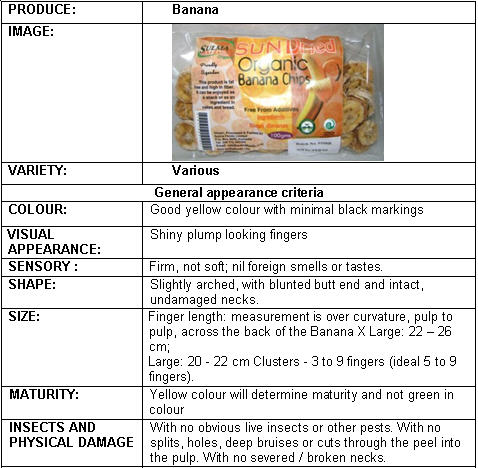 |
Nutritional value and recipes
Bananas are a highly nutritious fruit with a wide range of health benefits. Bananas are particularly abundant in carbohydrates, predominantly in the form of natural sugars such as fructose, glucose, and sucrose. These sugars serve as a rapid source of energy, making bananas an ideal choice for an instant boost. Additionally, bananas are a noteworthy source of dietary fiber, comprising both soluble and insoluble varieties. The soluble fiber aids in regulating blood sugar levels and fostering healthy digestion, while the insoluble fiber supports regular bowel movements, preventing constipation. The Fiber can also aid in weight management.
Bananas contain a significant amount of vitamin C, which acts as an antioxidant and bolsters immune function. Furthermore, bananas provide a noteworthy quantity of vitamin B6, a crucial nutrient for optimal brain development and function. In terms of minerals, bananas are notably rich in potassium, a mineral essential for maintaining proper heart and muscle function. This attribute renders bananas a valuable component of a heart-healthy diet, as potassium helps regulate blood pressure and diminishes the risk of cardiovascular ailments. Moreover, bananas contain modest amounts of other minerals such as magnesium and manganese, further contributing to their nutritional value.
Plantains are starchier and have a lower sugar content compared to dessert bananas. Consequently, they possess a lower glycemic index, providing a slower release of energy. Plantains also tend to have higher fiber content, which can enhance digestion and promote satiety. Regarding vitamin and mineral content, both plantains and dessert bananas offer similar levels of vitamin C and vitamin B6. However, plantains typically contain higher amounts of potassium, making them an excellent choice for individuals seeking to increase their potassium intake. (Healthline.com).
Table 1: Proximate nutritional composition of 100g of Banana
Banana, plantain, green, raw | Dessert banana - Cavendish, raw | Recommended daily allowance (approx.) for adultsa | |
Edible portion | 0.5 | 0.62 | |
Energy (KJ) | 410 | 402 | 9623 |
Energy(kcal)) | 97 | 95 | 2300 |
Water (g) | 73.6 | 74.4 | 2000-3000c |
Protein (g) | 1.4 | 1.08 | 50 |
Fat (g) | [0.4] | [0.3] | <30 (male), <20 (female)b |
Carbohydrates | 20.1 | 20.6 | 225 -325g |
Total dietary Fibre (g) | 3.6 | 2.75 | 30d |
Ash (g) | 0.9 | 0.9 | |
Mineral composition | |||
Calcium (mg) | 7 | 10 | 800 |
Iron (mg) | 0.8 | 0.3 | 14 |
Magnesium (mg) | 23 | 26 | 300 |
Phosphorus (mg) | 29 | 37 | 800 |
Potassium (mg) | 322 | 187 | 4,700f |
Sodium (mg) | 10 | 0 | <2300e |
Zinc (mg) | 0.23 | 0.36 | 15 |
Sem (mg) | 1 | 0 | 0.9 |
Bioactive compound composition | |||
Vit A RE (mcg) | 0 | 5 | 800 |
Vit A RAE (mcg) | 1 | 9 | 800 |
Retinol (mcg) | 0 | 0 | 1000 |
Beta-carotene equiv. (mcg) | 3 | 56 | 600 – 1500g |
Vit D (mcg) | 0h | 0h | 5 – 15* |
Vit E (mg) | 0.28 | 0.08 | 9 |
Thiamine (mg) | 0.06 | 0.05 | 1.4 |
Riboflavin (mg) | 0.04 | 0.05 | 1.6 |
Niacin (mg) | 0.33 | 0.35 | 18 |
Vit B6 (mg) | 0.36h | 0.59h | 1.3 |
Folate (mcg) | 19 | 22 | 400f |
Vit B12 (mcg) | 0 | 0 | 3 |
Vit C (mg) | 23.3 | 4 | 60 |
Recipes
1. Fried plantains
Ingredients
• Plantain – 6 fingers
• Oil – 2 cups or enough to fry 3 fingers at ago
• Seasonings of choice
Procedure
• Access individual fingers from a cluster or hand of plantains
• Remove both ends of individual fingers of the plantain.
• Using a knife make a slit along the length and remove the skin (peel).
• Place the plantain on a chop board and make medium-sized slices with your knife held at an angle.
• Heat oil
• Fry the slices as you turn them occasionally until soft and golden brown (about 6 min.)
• Using a perforated spoon, transfer them on to a plate or tray with a paper towel on top to absorb excess oil.
• Season the plantain as desired and serve hot.
2. Roasted plantain
(Source: The Gishu (Bamasaba), Mt. Elgon)
Ingredients
• Plantain – A hand of plantain preferably Gonja type
• Seasonings of choice
Procedure
• Clean the plantain with the covers on
• Roast on charcoal fire using low heat, turning the plantain regularly
• When soft (after about 30 min) remove from fire and peel
• Add salt (optional)
• Eat as snack or serve with beef or chicken sauce
Note:
• The plantain may be peeled then roasted with low heat.
• This is a snack. Gamooke is pronounced like ‘Gamooche’
3. Matoke
(Uganda recipe)
Ingredients
700 g Green bananas
2 small banana leaves (for covering the food while cooking).
1 cup water
Preparation
• Peel and clean the bananas.
• Line the bottom of a pot (sufuria) with banana leaves.
• Place the peeled bananas on this and likewise cover them with the banana leaves on the top.
• Add water and then place the pot (sufuria) on fire and leave to cook.
• Allow boiling until the banana leaves turn jungle green, or when the bananas become tender and then the bananas are cooked.
• Drain the excess water, then without uncovering the banana leaves; apply pressure to the bananas to mash them.
• Mashing the bananas this way will not produce a smooth mash, and hence banana leaves could be removed and mashing done to achieve this.
• Serve with groundnut stew.
N.B. Covering the bananas with the banana leaves helps retains a rich ‘banana’ flavor to the food as well as keeps the food warm.
Information on Pests
Burrowing nematode (Radopholus similis) The burrowing nematode is the most destructive nematode species attacking bananas. Dark patches or spots on the roots indicate nematode infestation. Severely infected plants may show only stubs of rotted roots and may fall down when the bunch has formed. Bananas are also attacked by other nematode species such as Pratylenchus spp., Helicotylencus spp. and Meloidogyne spp. What to do:
|
Banana weevil borer (Cosmopolites sordidus) The banana weevil is the most important insect pest of banana. It is about 1-1.5 cm long. The larva (grub) is most destructive: It bores irregular tunnels in the rhizome/corm and pseudostems at ground level. A large proportion of the tissue is destroyed, this reduces the amount of water and nutrients the plants can take up as well as lessening their anchorage. Heavy infestation may kill young plants. Older plants are easily blown over by the wind. What to do:
|
Banana silvering thrips (Hercinothrips bicinctus) Banana-silvering thrips are small (1.5 mm long), slender, brown insects with pale yellow hind wings that appear as a yellow line down the back of the body when the insect is at rest. Adult thrips have characteristic wings; the transparent wings have a fringe of hairs around the outside edge standing out in the same plane as the wing. The tiny eggs are laid just into the plant tissue on the pseudostem or where 2 fruits touch. The nymphs hatch after 7 or 8 days, are pale yellow or white in colour and often have a black globule of excrement at the end of the abdomen. The larval stage lasts about 10 days after which the nymphs move down into the soil to pupate. Adults emerge after a further 7 to 10 days.
The banana silvering thrips is found in tropical and subtropical regions, they are polyphagous and particularly found on bananas. They feed on the skin of the fruit causing silvering patches (hence the common name of the insect), which turn brown and may cover the whole fruit and deep longitudinal cracks may appear as a result. What to do:
|
Fruit flies (Bactrocera invadens and Ceratitis rosa) Two species of fruit flies (Bactrocera invadens and Ceratitis rosa) attack banana in Kenya. Bactrocera invadens is a new species recently discovered in Africa, its 2-3mm in size. This fruit fly is reported attacking banana in Sudan and Kenya and it is a major threat since it leads to rejection of banana in the export market.
One of the most effective control techniques against fruit flies in general is to wrap fruit, either in newspaper, a paper bag, or in the case of long/thin fruits, a polythene sleeve. This is a simple physical barrier to oviposition but it has to be applied well before the fruit is attacked. Little information is available on the attack time for most fruits, but few Bactrocera spp. attack prior to ripening.
Infected fruit on the ground will act as reservoir for re-infestation. If infested fruit reaches the market then maggot infested fruit will be discarded, so allowing emerging adults access to new crop areas. What to do:
|
Banana aphid (Pentalonia nigronervosa) It is a small aphid about 1-2 mm long and blackish-brown in colour. Colonies are usually present on the base of young leaves. The direct damage caused by aphids sucking the plant sap is negligible. However, they are important pests as vectors of the virus causing the bunchy-top disease. Large colonies of aphids can occur around the base of pseudostems, down to 7-8 cm below the soil surface. Dense colonies can also occur between the sheath of outer leaf and pseudostem. During drought, aphids seek sheltered locations on the plant. In dull and humid weather, however, aphids may spread to foliage generally, and to the bases of maturing hands of fruit and all over the hands of young fruit. Colonies of P. nigronervosa are attended by ants, which feed on the large quantity of honeydew produced. Many species of ant are involved worldwide. Stechmann et al. (1996) described how ant-attendance reduced the density of indigenous predators of P. nigronervosa considerably, which has implications for biological control (Wellings et al., 1994). Ants also transport aphids from plant to plant, establishing new infestations. P. nigronervosa is not normally found on plantains, suggesting that they may have resistance to the aphid. What to do:
|


